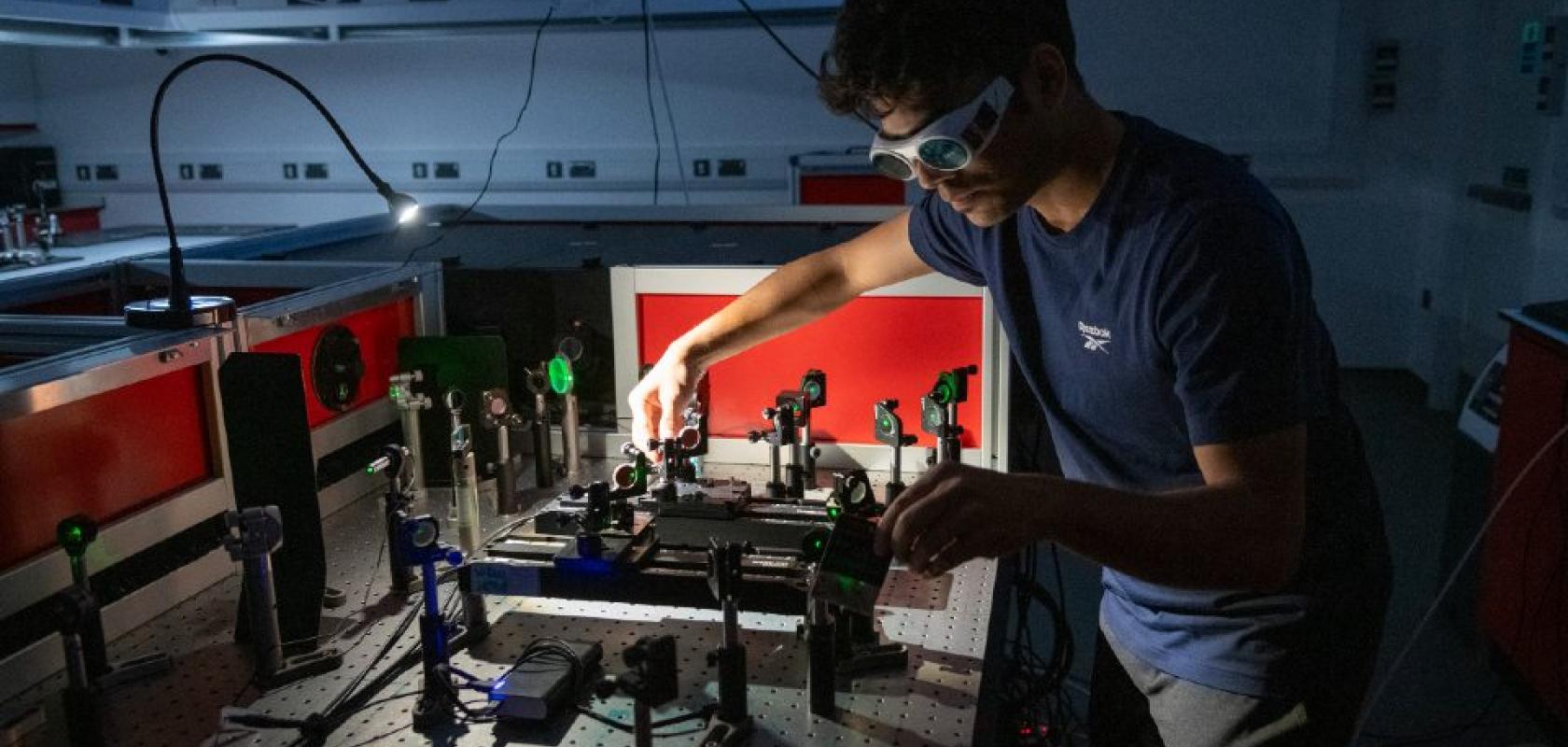The 600sqm Emergent Photonics Research Centre at Loughborough University will provide a base for researchers to study advanced ultra-fast nonlinear optics and photonics, creating innovative applications in a range of scientific areas from biology to quantum physics.
With an agenda that includes using terahertz waves and micro-lasers known as microcombs to develop new photonics technologies, as well as exploring the use of AI and deep learning to control photonic systems, the Centre is supported by funding from various sources including the European Research Council (ERC), the Engineering and Physical Sciences Research Council (EPSRC), the Defence Science and Technology Laboratory (DSTL), the Defence and Security Accelerator (DASA), Innovate UK, The Leverhulme Trust and the United States Army Research Office.
Research at the Centre will be targeted to creative innovative applications in ground-breaking areas of photonics including the formation of portable and highly accurate devices for timing, positioning and navigation using microcombs to operate independently of the existing GPS infrastructure. The devices will give satellites and spacecraft the ability to pinpoint their positions and allow machines to navigate interior or subsea environments.
Bringing together a research team
Working at the Centre will be a team of internationally renowned photonics experts including Luana Olivieri – a Photonics100 honouree. Marco Peccianti, professor of photonics and the Centre director, said: “The Emergent Photonics Research Centre has a singular vision: to harness the transformative power of Photonic Complexity to explore and manipulate natural phenomena, creating groundbreaking technologies in the process. We aim to become an incubator for innovation, where scholars, industry experts and institutions from around the world can collaborate on pioneering research that bridges gaps between disparate scientific domains.”
Innovative research at the Emergent Photonics Research Centre
Another of the Centre’s primary areas of research is using terahertz waves – a challenging yet highly-sought-after section of the electromagnetic spectrum – to develop new technologies, including a terahertz wave camera that makes it possible to view microscopic items hidden inside 3D objects, resulting in major advances in medical diagnostics, security and materials research, for instance.
Further research projects at the Centre will also explore how artificial intelligence (AI) can be used to enhance the control of photonics systems and improve the speed and efficiency of deep-learning networks – an AI model based on the structure of the human brain.
Loughborough University at the forefront of scientific research
“The Centre’s research will deepen our understanding of nature’s complexities and drive the development of groundbreaking technologies with far-reaching impacts across multiple fields. This investment underscores Loughborough University’s commitment to world-leading fundamental research,” said Professor Nick Jennings, vice-chancellor and president of Loughborough University.
Meanwhile, the University’s dean of the School of Science, Professor Claudia Eberlein, also commented: “Photonics plays a key role in both cutting-edge fundamental research as well as modern innovations in 21st-century technology. Loughborough has made a major investment in establishing this very large and highly sophisticated Centre in order to be at the forefront of these developments. Projects that have already started range from fundamental metrology to advances in communications technology and novel pathways of investigating living organisms.”


